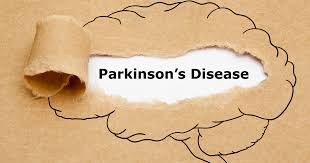How to Treat Parkinson’s Disease with Norland Products in Nigeria
 How to Treat Parkinson’s Disease with Norland Products in Nigeria
How to Treat Parkinson’s Disease with Norland Products in Nigeria
Most people may have heard about this disease because the great boxer Mohammed Ali had it. However, if you are reading this article, we will be providing you with a breakdown of what Parkinson disease entails.
According to Mayoclinic.org , Parkinson’s disease is described as a progressive nervous system disorder. The disorder is known to affect movement. Its symptoms begin gradually.
And, there are times where the symptoms start with a hardly noticeable tremor in one hand. Though tremors are typical, the disorder normally causes stiffness or slowness of movement.
Unfortunately, this disease has no cure, but medications can significantly boost the symptoms. In some cases, doctors tend to suggest surgery to regulate specific regions of the brain and enhance the symptoms.
In simpler terms, this disease is a movement disorder that majorly affects the nervous system. Its symptoms have been known to occur as a result of low dopamine levels in the human brain.
Medical experts have no idea why Parkinson’s disease develops, but they believe exposure to environmental factors like toxins and genetic changes play vital roles.
Symptoms And Early Signs Of Parkinson’s Disease
For Medicalnewstoday.com, one’s face may show little or no expressions at all in the early stages of the disease. A person’s arm may not swing as they walk, and their speech may get soft or slurred.
It must be noted that this disease’s symptoms worsen as the condition keeps progressing over time. The symptoms may begin with a slight tremor on the one hand and a stiff feeling in the body.
As the symptoms develop, some of the patients can experience dementia. Some of the early signs of this disease include:
- Movement changes like tremors
- Balance and coordination impairment that causes a person to fall over or drop things they hold.
- Loss of the sense of smell
- Fixed facial expressions as a result of changes in the nerves that have control over face muscles
- Change in gait, making the person shuffle as they walk or even lean forward slightly.
- Softer voice or voice tremor
- Cramped and smaller handwriting
- Sleep issues that result from restless legs
- Swift eye movement
Note that the symptoms of Parkinson’s disease may begin from one side of the body and subtly affect the two sides. Some other symptoms that are common include:
- Mood changes, and this includes depression
- Difficulty swallowing and chewing
- Skin issues
- Delusions, hallucinations, and dementia can likely develop with time
- Constipation
- Fatigue
There are other conditions one may have that make use of similar symptoms without them having Parkinson’s disease. These conditions include:
- Head trauma
- Stroke
- Encephalitis
- Parkinsonism
- Progressive supranuclear palsy, and;
- Multiple system atrophy
Stages Of Parkinson’s Disease
Though there are no tests for this disease, its similarity to other conditions makes it difficult to diagnose its early stages. In addition, as a progressive disease, its symptoms worsen with time.
According to Healthline.com, most doctors use the Yahr and Hoehn scale to classify the different stages of the disease. Note that the scale splits symptoms into five stages.
This will help the healthcare providers to know the advancement of the diseases’ symptoms and signs. The stages are:
- Stage 1
Stage one of the disease is usually the mildest form. It is very mild that patients may not experience noticeable symptoms. This is because the symptoms may likely not begin to interfere with their daily tasks and life.
If there are any symptoms, they will likely be isolated to one part of the body.
- Stage 2
Progression from stage one to stage two can take months and sometimes years. Each patient with this disease tends to experience it differently. In stage two, you may begin experiencing some symptoms like:
- Tremors
- Facial expressions changes
- Trembling
- Muscle stiffness
The stiffness of the muscles will complicate the daily tasks, thus prolonging the amount of time it will take to finish up a task. Nonetheless, one will not experience balance issues at this stage.
Here, symptoms will most likely appear on the two sides of the body. And, the changes in facial expression, gait and posture will be much more noticeable.
- Stage 3
This is the middle stage, and the symptoms have likely reached the turning point. Though you may not experience new symptoms, the normal symptoms are more noticeable. These symptoms will interfere with daily tasks as well.
The movements here are slower, and this will slow down one’s activities. As a result, balance problems will be more pronounced, and falls will be common. However, those who are at this stage can still maintain their independence and even complete some activities with little assistance.
- Stage 4
Here, the progression from the previous stage up to this stage will bring with it significant changes. The patient will begin to experience huge difficulty in standing without an assistive device or walker.
The muscle movements and reactions will be slower, and living alone will be unsafe, even dangerous.
- Stage 5
This is the most advanced stage, and the acute symptoms will make having assistance a necessity. Here, it will be challenging to stand and might be impossible. Therefore, the patient will most likely need a wheelchair.
At this stage, the patient may begin to experience delusions, hallucinations and confusion. All these complications may start in the later stages.
Diagnosis Of Parkinson’s Disease
According to Nia.nih.gov, many disorders can cause symptoms that are similar to that of Parkinson’s disease. Those who have Parkinson-like symptoms that are actually from other causes are said to have Parkinsonism.
Though these disorders may initially be misdiagnosed as Parkinson’s, specific medical tests and response to drug treatment will assist in distinguishing them from Parkinson’s.
Since many other diseases have similar features but demand different treatments, making the definitive diagnosis as quickly as possible is vital. Unfortunately, as it stands, there are no laboratory or blood tests to diagnose the non-genetic causes of Parkinson’s.
Note that the diagnosis is entirely based on the medical history of a person and neurological examination. A vital hallmark of Parkinson’s is the improvement after the medication has been initiated.
Treatment Of Parkinson’s Disease
While there is no cure for this disease, surgical treatment, medicines, and other therapies can frequently relieve some of the symptoms. The medicines used in the treatment of Parkinson’s include:
- Drugs that are capable of increasing dopamine levels in the brain
- Drugs that are capable of affecting other brain chemicals in the human body, and;
- Drugs that are capable of assisting to control non-motor symptoms.
The primary therapy for Parkinson’s is known as levodopa, which is also called L-dopa. The nerve cells make use of L-dopa to make dopamine to replenish the dwindling supply of the brain.
Usually, patients take L-dopa alongside another medication known as carbidopa. Carbidopa is used to prevent or decrease some of the side effects of L-dopa therapy. The side effects include:
- Vomiting
- Nausea
- Restlessness
- Low blood pressure
And, it also decreases the amount of L-dopa that needs to boost symptoms. Those with Parkinson’s are to not quit taking L-dopa without letting their doctor know. Having to stop the drug suddenly will result in severe side effects like difficulty breathing or moving.
Some other medicines used in treating the symptoms of Parkinson’s are:
- Dopamine agonists which aid in mimicking the role of dopamine in the human brain
- MAO-B inhibitors used to slow down an enzyme that breaks down the dopamine in the human brain
- COMT inhibitors which assist in breaking down dopamine
- Amantadine, which is an old antiviral drug used to decrease involuntary movements.
And finally, Anticholinergic, a drug used to decrease muscle rigidity and tremors.
What Is Norland Products?
The first thing to note is that Norland products have been successfully used to cure many ailments like cancer, diabetes, hypertension, infertility in both genders, HIV, hepatitis and even paralysis, to name a few.
For those unaware, Norland was established in the year 2008, and it is regarded as a large scale transnational industrial group. Thus group fully covers medical cosmetology, health, e-commerce and direct selling (MLM).
The Norland insured is integrated with diverse businesses such as medical services, health management, production, finance and international logistics.
It must be noted that this company has taken a big lead in the health detoxification field. And it does this by adhering to its vision. Its vision states that it will create a universal ecosystem of health and detoxification in a bid for everyone to benefit from health awareness.
As it stands, this company can be found in roughly forty-eight countries and four continents, this includes Africa. It began in Africa in 2017 and has been in Nigeria for three years.
How are Norland Product sold?
Norland products are sold through Network Marketing?
Network marketing is a Direct selling method in which independent-agents serve as distributors of goods and services, and are encouraged to build and manage their own sales force by recruiting and training other independent agents.
In this method, a commission is earned on both the agent’s own sales revenue, as well as on the sales revenue of the sales-force recruited by the agent and his or her recruits (called downline). Also called multilevel marketing (MLM), cellular marketing, or by other such names, it is a multi-billion dollar worldwide industry that distributes practically any portable item.
How to Treat Parkinson’s Disease with Norland Products in Nigeria
- Gi Vital softgel 3-5 softgel 2x daily
 How to Treat Parkinson’s Disease with Norland Products in Nigeria
How to Treat Parkinson’s Disease with Norland Products in Nigeria
- Calcium iron zinc – 1 cap 2x daily
- Oligopeptide 1 sachet 2-3x daily
- Alkaline Cup – use to drink water
 How to Treat Parkinson’s Disease with Norland Products in Nigeria
How to Treat Parkinson’s Disease with Norland Products in Nigeria
Note: Norland Treatments generally is for 3 months.
To make a purchase and to find out the cost call or whatsapp 08060779290
https://api.whatsapp.com/send?phone=2348060779290
Testimony
STROKE PATIENT RECOVERED WITHIN FEW WEEKS OF NORLAND TREATMENT.
He has not walked for five years but with Norland products he was revived and can walk on his own.
Related